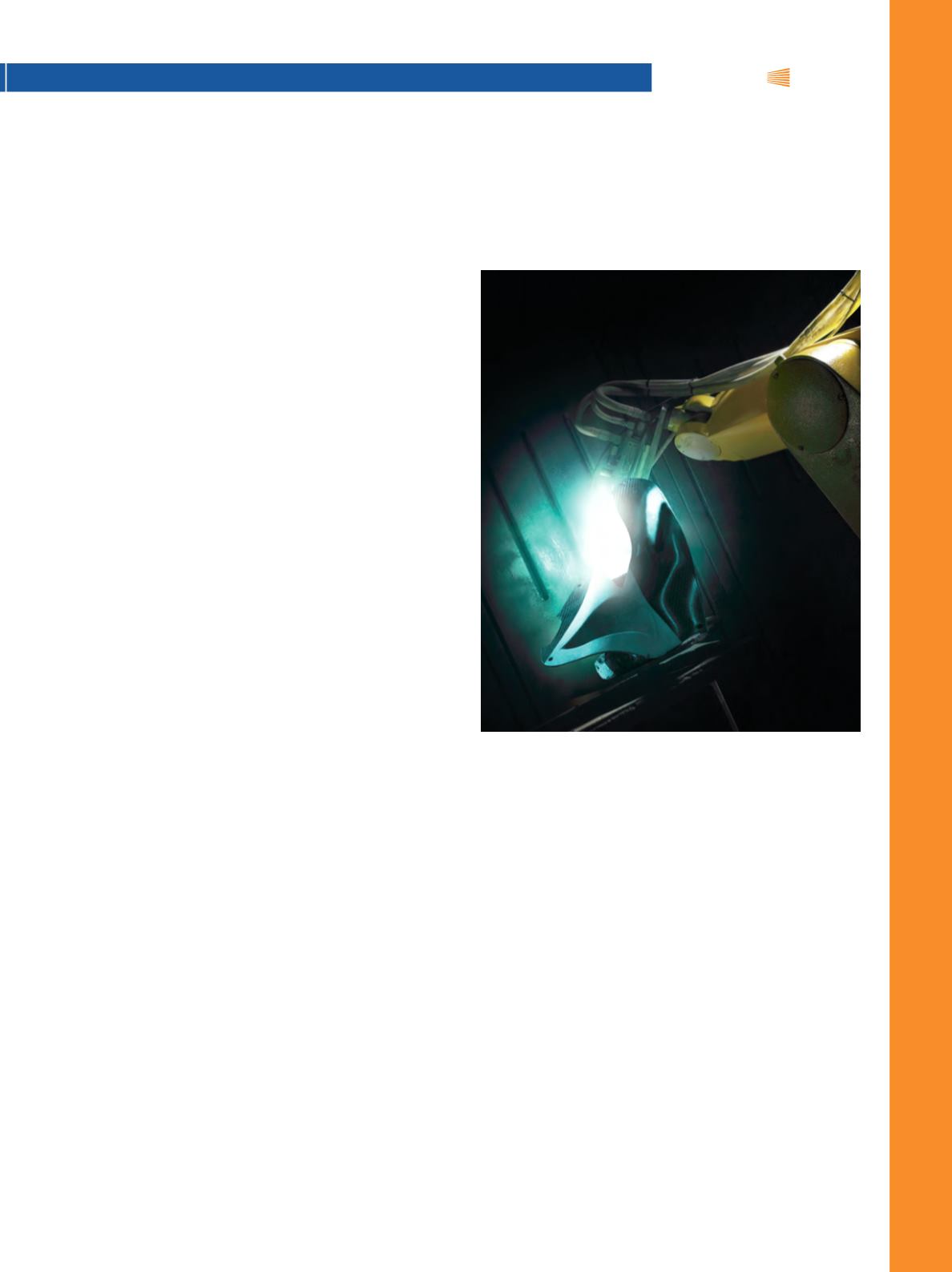

TECHNICAL SPOTLIGHT
SURFACE COATINGS OFFER PROTECTION
IN HARSH ENVIRONMENTS
P
lasma spray coatings are increasingly used to solve a
range of engineering issues for military suppliers, in-
cluding heat, wear, electrical insulation, and the re-
placement of more harmful coatings. Plasma spray coatings
now offer the potential to solve electro-mechanical interfer-
ence on composites.
Novel surface technology derived from experience in the
nuclear industry is enabling engineers to solve many perfor-
mance issues in a range of harsh environments. Zircotec Ltd.,
UK, originally developed its technologies for use in nuclear
reactors. During the last decade, its coatings have been used
in several other applications, including orthopedic implants,
and the company has expanded into the defense sector with
a greater emphasis on heat protection. Anti-abrasive coatings,
electrically insulating formulas, and cadmium-free options are
also available.
Process capability
Plasma spray technology works by injecting powder
particles into a nitrogen or argon plasma with a flame tem-
perature of roughly 20,000K and a gas velocity of Mach 2-3.
Therefore, particles spend a short time in the flame while
spray parameters are adjusted, and an extensive range of
materials may be sprayed. These range from nylon at the
lower end of the temperature spectrum to beryllia at the
top. Provided the material does not sublime nor is transpar-
ent to UV, particles will melt and quench as splats onto the
substrate. Control of overall spray parameters to predefined
tolerances ensures that coatings are evenly built-up in mul-
tiple thin layers—a method that helps to reduce stress in the
final coating.
A range of plasma spray coatings is already being suc-
cessfully applied to metallic components, reducing metal
surface temperatures by more than 170°C in some applica-
tions such as automotive exhaust systems. Zirconia has a
thermal efficiency of less than 1.7 W/m K (compared with 4
W/m K for alumina), enabling coatings that are highly effec-
tive at inhibiting surface heat radiation. This coating is also a
suitable choice for thermal management.
The defense sector has adopted another technology—
a flexible ceramic supplied on an aluminum foil. ZircoFlex
solves heat issues without components needing to be re-
moved from service for spraying, making it easy to retrofit,
even during use. ZircoFlex is a flexible ceramic heat shield
material, offering superior thermal barrier performance at
minimal weight and thickness. Supplied in sheets, it can be
cut, folded, and bent to fit any shape and offers surface tem-
perature reductions of 64%. The newest derivative, ZircoFlex
FORM, will enable structural heat shields to be made from a
flexible and bendable sheet.
The material is produced as a thin aluminum or gold
backed foil that is easily bent and manipulated to suit dif-
ferent geometries, and can even be folded tightly through
180° without damaging the thermal barrier. It weighs only
0.46kg/m
2
(0.23kg/m
2
for ZircoFlex Gold). The material is ex-
tremely thin—at 0.25 mm overall, it requires only minimal
space for installation. In addition, the metal backing makes
it robust, easy to handle and cut, and simple to install by
hand or machine.
Enabling greater use of composites
Zircotec has pioneered the use of plasma spray coat-
ings on composite substrates to enable use in environments
where they would have previously failed due to delamina-
tion or heat damage. Formula One racing is an area where
these coatings are increasingly popular to prevent such
Fig. 1 —
Zircotec’s plasma spraying process safely coats
composites, enabling use in high temperature environments.
A D V A N C E D
M A T E R I A L S
&
P R O C E S S E S | F E B R U A R Y 2 0 1 5 |
i T S S e
1 3
iTSSe
|
TSS


















